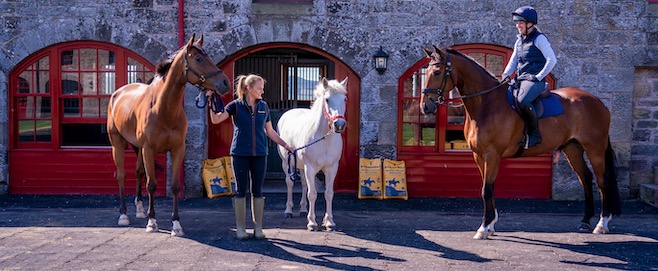Most of us are familiar with the spring upsurge in laminitis, when horses are grazing on fresh green grass and have more time out in the paddock.
But with leaves changing and the fall of autumn, there is an almost equal rise in the laminitis risk to horses as the temperature cools.
Laminitis is a serious disease which affects the hooves, causing potentially long-term and crippling changes to the anatomy, even loss of foot function. The British Horse Society reports that 1 in 10 horses/ponies in the UK are affected by this extremely painful condition, so it’s vital for owners to be aware of the autumn danger, and recognise the earliest signs of a problem.
While in summer, or following unusually dry periods, grass typically dries out or turns brown, autumn brings wet weather and a renewal in grass growth. This provides the conditions for the return of laminitis, as the sugar content is higher in green grass, and particularly so in grasses like clover and ryegrass.
Weight watching
An increased sugar intake can affect horse insulin regulation, and effectively provoke laminitis. This is why obese horses are twice as likely to suffer from the disesae, as a diet high in sugar is likely to encourage weight gain. This causes hyperinsulinaemia and can trigger laminitis, so take care to look out for your horse’s weight.
It’s important to think about how grass is a major contributor of calories in a horse’s diet, which will also help guide you towards regulating insulin levels as we come into winter.
Early warning
Here below Bedmax outlines the Six Signs of Autumn Laminitis and shares some advice on how to deal with any suspected cases, including the best equine bedding for laminitic horses.
Watch out if…
- Your horse assumes an unusual stance, with weight shifted to the hind legs and with their front legs stretched out
- Your horse shifts their weight from foot to foot, or rocks back and forth in their stable
- Your horse walks gingerly, takes a shortened stride, or prefers walking on soft ground
- Your horse is relucant to turn when on a lead rope
- Your horse is lying down more than usual
- You can feel a strong digital pulse at the back of your horse’s pastern and/or notice abnormal heat in the hoof wall
What to do
The earlier laminitis is caught, the less internal damage will be caused. So if you think your horse may be displaying symptoms, act immediately. The immediate step is to call your vet – or if not available your farrier – to come and confirm if it’s laminitis. There are limited pharmaceutical treatments available, and the primary advice from your vet is likely to be a period of box rest on a deep bed of shavings.
Many vets recommend Bedmax by name as the best bedding for horses with laminitis because it provides the depth and support needed to protect the horses’ hooves, and helps to reduce the pain.
As always, however, prevention is infinitely easier and better than cure, so keep your horses safe this autumn by keeping a look out for laminitis. The British Horse Society also has some key information to keep you on top of any worrying signs.




